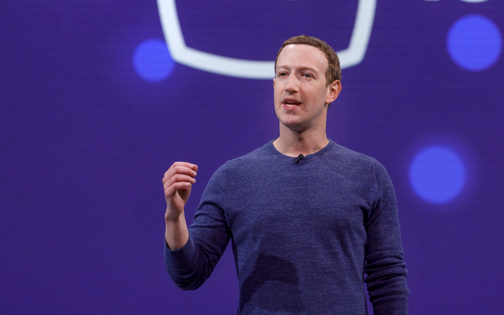Meta, the parent company of Facebook and WhatsApp, is stepping up its efforts to transform citizen service delivery in India by partnering with State governments through its AI model Llama and the widely used WhatsApp messaging platform. Sandhya Devanathan, Meta’s India head, disclosed the plan, highlighting the company’s aim to make government services more accessible, integrated, and efficient through digital tools, as per a Moneycontrol report.
Since January 2025, Meta has been working with the State government of Andhra Pradesh to streamline citizen interactions through a WhatsApp-based chatbot. This bot functions as a single-window access point for a wide range of public services: a shift from the usual fragmented system of multiple websites and contact numbers.
Notably, the Mark Zuckerberg-owned tech company plans to launch similar chatbots in collaboration with the Maharashtra and Odisha governments in the coming months.
Andhra Pradesh Leads with Mana Mitra
Andhra Pradesh has emerged as the frontrunner in this digital governance drive. In January, the state launched Mana Mitra, a WhatsApp chatbot that consolidated 161 public services via a single phone number. These services include utility payments, temple bookings, bus reservations, and civic grievance redressals.
By March, the number of services offered had grown to 200, with a goal of reaching 500 by June. Additionally, the Andhra Pradesh Government reported that Mana Mitra had facilitated over 5.1 million transactions by March, reaching more than 2.5 million citizens.
Devanathan noted that the state’s forward-thinking approach allowed for a unified platform that combined services from multiple departments. “What we have done differently with Andhra Pradesh is launching all citizen services on a single phone number, and that has been a good model for e-governance,” she said. She credited the state government for doing the “heavy lifting” of departmental integration, while Meta and its business solution provider (BSP) partner supported the user experience design.
Maharashtra and Odisha in the Pipeline
Inspired by Andhra Pradesh’s model, Maharashtra and Odisha are gearing up to launch similar chatbot systems. Maharashtra has set an ambitious target of integrating over 500 services into a single WhatsApp contact, while Odisha plans to offer 429 services.
Devanathan described these efforts as being in the nascent stage but emphasised the potential for widened citizen access. “If you add AI and voice-enabled services as well at a later point, then inclusion becomes really powerful, because now you’re talking to people who may not be comfortable communicating in English,” she said.
Llama AI to Power Backend Efficiency
Beyond WhatsApp, Meta is also deploying its Llama AI model to improve backend government operations. Andhra Pradesh and Maharashtra have signed on to use Llama for functions like document retrieval, aiming to improve the productivity of the government staff.
The Llama model is also being used by the Ministry of Skill Development and Entrepreneurship, which launched its Skill India Assistant (SIA) in January. The chatbot, built entirely on Llama, helps young users find job opportunities, training resources, and take customised quizzes. It supports text and voice interactions in both Hindi and English.
India: A Strategic Market for Meta’s AI Push
With over 500 million users, India is WhatsApp’s largest market globally, making it central to Meta’s long-term business messaging plans. Furthermore, Devanathan highlighted that India is one of the most active markets for developers working with Llama, and said that Meta is working to make future versions of Llama more India-centric by improving language support and ensuring datasets represent the country’s diversity.
Advertisements
“India is a really important market for Llama…How can we make sure that Indian inputs are being considered in the Llama models that are being generated? That’s an ongoing effort,” she added.
Notably, Meta includes support for Hindi in Llama 3.1: which was released in July 2024.
Centre and other States’ initiatives
At the national level, initiatives like the IndiaAI Mission and Digital India Bhashini are laying the groundwork for a unified AI ecosystem, enabling vernacular digital access and focusing on key sectors like healthcare, education, and finance.
Elsewhere, Telangana’s partnership with Meta and Uttar Pradesh’s AI training for bureaucrats are prime examples of how Indian states are actively integrating AI in governance. While Telangana is focusing on integrating open-source models for better service delivery, Uttar Pradesh is empowering its officers with AI skills for day-to-day administration.
Why Only Llama? The Need for Diverse AI Options
While Andhra Pradesh, Maharashtra Odisha and Telangana’s adoption of Meta’s platform underscores a promising shift toward open-access AI, it also raises important questions about diversity and choice in government tech partnerships. Relying heavily on a single model, even an open-source one, can create a form of soft dependency, limiting innovation and competition.
Different AI models have distinct strengths: some excel at understanding language, others at summarisation or code generation. By broadening the field to include models from Indian research institutions or global players like Google’s Gemma, Cohere, or open-source efforts from Hugging Face, State governments can foster a healthier, more resilient AI ecosystem. Encouraging variety helps people adapt, prevents monopolies from dominating, and allows authorities to tailor public systems to meet different linguistic and administrative needs.
Also Read:
Support our journalism:

